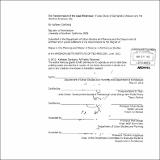| dc.contributor.advisor | Brent D. Ryan and Shun Kanda. | en_US |
| dc.contributor.author | Dahlberg, Kathleen (Kathleen Noelle) | en_US |
| dc.contributor.other | Massachusetts Institute of Technology. Dept. of Architecture. | en_US |
| dc.coverage.spatial | n-us-mo | en_US |
| dc.date.accessioned | 2012-10-10T15:47:49Z | |
| dc.date.available | 2012-10-10T15:47:49Z | |
| dc.date.copyright | 2012 | en_US |
| dc.date.issued | 2012 | en_US |
| dc.identifier.uri | http://hdl.handle.net/1721.1/73812 | |
| dc.description | Thesis (M.C.P.)--Massachusetts Institute of Technology, Dept. of Urban Studies and Planning; and, (S.M.)--Massachusetts Institute of Technology, Dept. of Architecture, 2012. | en_US |
| dc.description | Cataloged from PDF version of thesis. Page 206 blank. | en_US |
| dc.description | Includes bibliographical references (p. 197-205). | en_US |
| dc.description.abstract | This thesis explores the mid-size American city and examines the deeply nuanced relationship between city form, landscape and culture. Using Springfield Missouri as a representative case study, the city is viewed as a process of transformation, a reading which is used to build a layered spatial comprehension, interpreting the terrain as a set of limits, cultural production, and space of collective desire; and the city as a negotiation between global economic development and local specificity. The thesis is comprised of two parallel inquiries, one into a city type-the mid-size American city, the second about methods of observation and analysis as tools for city planning and urban design. Springfield, Missouri is a typical low density, poly-centered American city. Incorporated in 1838, it has never been a big city-instead Springfield has spent the past 174 years slowly transitioning from rural to urban, weaving broad stages of American urbanity with the Ozark plateaus and hills. The present city is experienced as heightened contrasts between strips, open fields, tranquil gardens, and the open space of the periphery, magnifying the ironic, poetic, bittersweet, and exhilarating state of the American town's transition to new metropolis the beauty of the ideal wilderness has been paired with the strips and squares of a generic city. It is the type of city which rests uncomfortably within normative planning/design ideal snot traditional or with a large downtown, it is often relegated to sprawl, geographically and economically it functions as a metropolitan region, but with considerably less density; it has accumulated gradually overtime, a piecemeal process that is the result of many contributors, with the informal guide of the survey grid, and the market economy. Springfield shares with other American cities the suburban motivations of everyday life centered around access, jobs, home ownership, school systems, and affordability). It faces the economic challenges of de-industrialization, the conundrum of the downtown and how to view form-how to define the collective identity of the expanded polycentric metropolis and how to grow in the future. In response this thesis suggests that In Springfield, the wilderness offers an identity more powerful and resilient than that of the downtown or a commercial shopping center, that to understand the city's form (and its future), its spatial terms must be re-conceptualized to consider form and terrain as interrelated systems that are associated with collective meaning and cultural function. The following thesis is structured as a layered dialogue between modes of inquiry exploring Springfield and the transformation of the ideal wilderness as a historical, theoretical, experiential, and spatial process. And each section explores the concept of wilderness as both a physical and psychological/cultural space, and each imparts an insight as to the spatial structure of the city. The goal of this succession has been to generate a layering of spatial comprehension that synthesizes across scales, using drawings to project abstract concepts and empirical data into concrete representations of space. The drawings are presented as both exploratory and revelations, each one considering the relationship between city form and terrain as an ongoing dialogue. Simultaneously these representations project a method for reading the mid-size city and how we might begin to view its form, not as a centralized polarity, but as a connective net that is ordered by the concrete fact and cultural ideal of the wilderness. | en_US |
| dc.description.statementofresponsibility | by Kathleen Dahlberg. | en_US |
| dc.format.extent | 206 p. | en_US |
| dc.language.iso | eng | en_US |
| dc.publisher | Massachusetts Institute of Technology | en_US |
| dc.rights | M.I.T. theses are protected by
copyright. They may be viewed from this source for any purpose, but
reproduction or distribution in any format is prohibited without written
permission. See provided URL for inquiries about permission. | en_US |
| dc.rights.uri | http://dspace.mit.edu/handle/1721.1/7582 | en_US |
| dc.subject | Urban Studies and Planning. | en_US |
| dc.subject | Architecture. | en_US |
| dc.title | The transformation of the ideal wilderness : a case study of Springfield, Missouri and the mid-size American city | en_US |
| dc.type | Thesis | en_US |
| dc.description.degree | S.M. | en_US |
| dc.description.degree | M.C.P. | en_US |
| dc.contributor.department | Massachusetts Institute of Technology. Department of Architecture | |
| dc.contributor.department | Massachusetts Institute of Technology. Department of Urban Studies and Planning | |
| dc.identifier.oclc | 811249344 | en_US |
